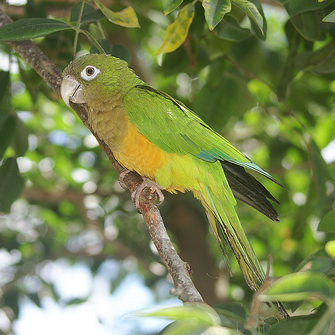Animals unknown to science, including sizable mammals, come to light every day (in fact, 1 every 3 days for the past decade in the Amazon Basin alone!). But parrots, being loud, colorful and active by day, have a hard time remaining undetected, even in remote habitats. Brazil’s Bald or Orange-Headed Parrot (Pyrilia aurantiocephala), however, despite being glimpsed in the past, was only recognized as a distinct species in 2002.
Incredible Species Diversity
The World Wildlife Fund recently announced that over 1,200 new species have been discovered since 1999 in the area of South America drained by the Amazon River, popularly known as the Amazon Basin. The region is a hotbed of diversity (new insects are so numerous that they were excluded from the report, and more fish species have been found in the Amazon than in the entire Atlantic Ocean!), but birds accounted for only 16 of the new discoveries. However, among these was a real shocker – a noisy blue and aquamarine parrot with a featherless, orange head. Read More »
 That Bird Blog – Bird Care and History for Pet Birds
That Bird Blog – Bird Care and History for Pet Birds




